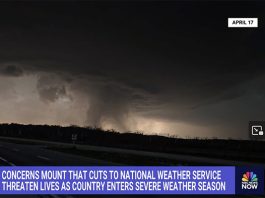Stockpiling is growing pasture for later use. This typically means applying nitrogen (N) to tall fescue pastures in August, letting them grow through the fall, and then grazing during the late fall and early winter. Kentucky bluegrass and other cool-season grasses will also respond to nitrogen applications in the fall, but here we’ll focus on tall fescue since it shows a higher nitrogen response and stockpiles better for winter grazing.
Getting Started
 The best pastures to target are those with the thickest stands of fescue. Fescue responds extremely well to N applications in late summer and has an amazing ability to retain its nutrient value through the winter. Targeted pastures should have low concentrations of weeds and low amounts of clover since legumes do not stockpile well after frost and the yield benefit of added N is less than in pure fescue stands.
The best pastures to target are those with the thickest stands of fescue. Fescue responds extremely well to N applications in late summer and has an amazing ability to retain its nutrient value through the winter. Targeted pastures should have low concentrations of weeds and low amounts of clover since legumes do not stockpile well after frost and the yield benefit of added N is less than in pure fescue stands.
Graze or mow your pastures to 2 to 3 inches during early to mid-August. Remove animals before overgrazing occurs or initial regrowth will be slow. Grazing or mowing removes low quality summer growth and allows the plant to produce high quality leaves. Assuming that there is adequate soil moisture, a considerable amount of growth will occur within four to six weeks, but waiting 8 to 12 weeks before grazing is preferable.
About Nitrogen and Timing Its Application
Tall fescue growth will occur without added nitrogen, but adding nitrogen provides maximum growth and forage quality. In Kentucky, nitrogen (90 units or actual lbs N) increased forage production by over a ton and protein by 5 percentage points. In Ohio, nitrogen (90 units or actual lbs N) increased protein by 9 percentage points and improved overall digestibility. Another reason to stockpile fescue is that it retains its quality extremely well through the winter months. In an Arkansas research study, stockpiled fescue was higher quality (12% CP and 55% TDN) even in early March than average quality hay. This attribute can be particularly beneficial for a late winter or spring calving cow-herd.

The optimal time to apply N is in early to mid-August. Applying it earlier encourages weedy grasses like crabgrass. Waiting until September reduces the efficiency of turning N into plant growth. Therefore, when N application is delayed until September or beyond, optimal N application rate will decrease, and you should carefully consider the benefit of increased fescue growth compared to the cost of purchased hay.
N response efficiency also depends on soil moisture. Without rain and/or adequate soil moisture, N response will be low, but even with small amounts of rain tall fescue has an amazing potential for fall growth. In areas that are exceptionally dry, applying N can be somewhat of a gamble in terms of the response.
There are several forms of N available for pasture use, but the two main types are ammonium nitrate and urea. Ammonium nitrate is an excellent form to use in late summer because it doesn’t volatilize on the surface.
Urea is generally a cheaper source of N, but a significant amount of N can be completely lost under hot, humid, and dry soil conditions that favor volatilization. Typical urea losses in late summer range from 15-30%, but can approach 40-50% when there is no rainfall for several weeks after application. Fortunately, urease inhibitors (e.g. Agrotain) reduce these losses with urea. Even though they add to the overall cost, urease inhibitors are recommended in the summer to deal with unpredictable August rainfall. The most effective urease inhibitors will typically prevent volatilization for two weeks without rain, compared to pure urea where volatilization begins immediately after application. Be aware that all urease inhibitors are not equally effective.
Besides the application of N, it is important that stockpiled fields be limed and fertilized with P and K to acceptable levels (see AGR-1 referenced on last page).
Using Your Stockpile
 Traditional “stockpiling” involves keeping cattle off the pasture until late fall, but this practice may be difficult when pasture production is low. If you need forage, N fertilized pastures can be grazed in the early fall, but it’s best to keep cattle off these pastures for at least a month. An alternative strategy is to feed hay during the stockpiling period to supplement the pastures that cattle are on.
Traditional “stockpiling” involves keeping cattle off the pasture until late fall, but this practice may be difficult when pasture production is low. If you need forage, N fertilized pastures can be grazed in the early fall, but it’s best to keep cattle off these pastures for at least a month. An alternative strategy is to feed hay during the stockpiling period to supplement the pastures that cattle are on.
Where possible, stockpiled tall fescue fields should be strip grazed and stocked heavily enough to graze down each paddock in 7 to 10 days or less. This allows the forage to be efficiently utilized without excessive trampling and waste. Since tall fescue does not re-grow in the winter, a back fence is not needed when strip grazing stockpiled growth.
Want More Information?
Check out this fact sheet: “Stockpiling for Fall and Winter Pasture.”




